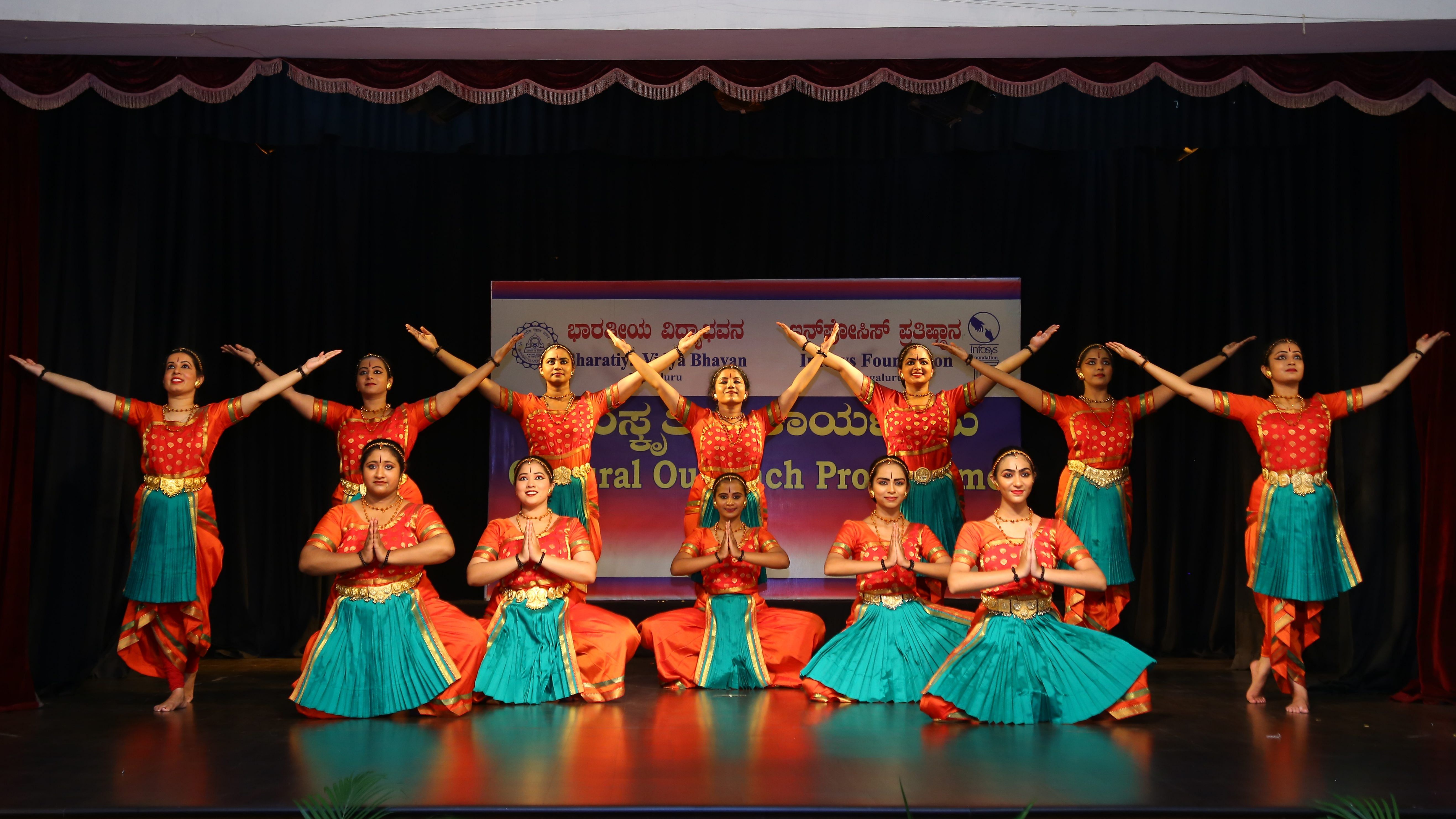
When an event is named "Sri Gurubhyo Namaha," one tends to assume it would be about the three poet saints—Tyagaraja, Muthuswamy Dikshitar and Syama Sastri—whose compositions are widely performed by artistes. However, the Bharatanatyam dance recital that happened at the Khincha Auditorium of Bharatiya Vidya Bhavan, Bengaluru, on May 29 had three other gurus as its muses.
The programme was an ode to Sankaracharya, Madhavacharya and Ramaujacharya, considered the Tri Acharyas. All three of them played a vital role in the Bhakti movement. While Shankaracharya proposed or popularised Advaita Vedanta, Ramanujacharya's philosophy was Vishishtadvaita (qualified non-dualism). There are many followers of Madhavacharya in Karnataka, with several people calling themselves Madhava Brahmins. Madhavacharya was a proponent of dualism or Dvaita school of thought.
The programme begins with a group of girls clad in similar saffron costumes stitched in the traditional Bharatanatyam style with minimal Aharyam (makeup and costumes) presenting their repertoire.
A production conceptualised by Seetha Guruprasad, a Bengaluru-based Bharatanatyam teacher and costume designer, "Sri Gurubhyo Namaha," is not a result of a prepared mind and script which takes several months. It happened by chance; the Bharatanatyam guru told DH.
"Bhavans wanted us to do something on Sankaracharya to celebrate Sankara Jayanti," said Guruprasad. "As a devotee of Madhavacharya, I wanted my production to have an element of Madhavacharya, so I decided to use a ready piece choreographed with him in mind. And, how could one leave out Ramanujacharya? They are the three pillars of the Vedantic tradition in India. That's how this production happened," said Guruprasad.
She even says that even the music was mostly put together from what was already available in the market since she and her troupe could not manage a proper studio recording in just 23 days between May 6 and May 29. The recital used Carnatic music on Sankaracharya like the Sankara Varnam sung by Kartik Hebbar that is available in the public domain.
Unlike most productions that do not follow the repertoire or the "margam," there was a "pushpanjali" as the invocatory item, a "varnam," which is usually the centrepiece in any Bharatanatyam recital. Elements in a Bharatanatyam repertoire include an invocatory piece and pieces based on footwork like "jathiswaram."
Through costumes and accessories, Guruprasad ensured that her performers looked somewhat austere like monks and not like regular Bharatanatyam dancers performing on stage. For instance, the dancers wore simple necklaces with just beads instead of heavy Bharatanatyam jewellery like heavy chains and headgear.
Guruprasad runs the Bharata Natya Shaale in Bengaluru, and her dance design outlet Bharathanjali costumes help design costumes for classical dance artistes.